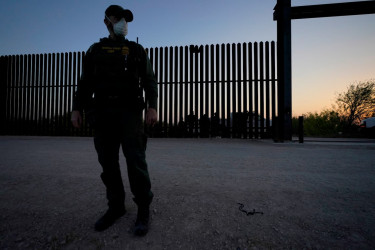In the early 1990s, an anti-immigrant insurgency took root in California, the center of the movement to bar Chinese immigration more than a century earlier. A major economic slump had taken hold, thanks in part to declining defense industry jobs after the Cold War drew to a close. Chinese people had moved into the San Gabriel Valley, and Latinos into the San Fernando Valley, as area aerospace manufacturers spun into sharp decline. Immigrants joined black Americans in the racist white imaginary as lazy and unworthy welfare dependents.
As jobs became scarcer, the number of immigrants, authorized and not, was growing. In 1990, an estimated 3.5 million undocumented immigrants lived in the United States, more than 40 percent of them in California. “Illegal immigration is the hottest issue in the state,” said Republican assemblyman Bill Morrow, who represented a wealthy district encompassing portions of Orange and San Diego Counties, in 1993. “We’ve got to say to the Federal Government, ‘If you don’t close the border, we will.’”
In a familiar contradiction, immigrants were seen as both competing for scarce jobs and refusing to work at all, mooching off the state. Citizens identified as “taxpayers” were forced by a hostile government to fund the dangerous fecundity of non-white layabouts. One Republican legislator from an LA suburb circulated a ditty composed by a constituent to that effect:
Everything is mucho good.
Soon we own the neighborhood.
We have a hobby—it’s called breeding.
Welfare pay for baby feeding.
Latina childbearing was a dominant theme, deeply enmeshed with the era’s demonization of poor black mothers. It tied the government’s fiscal irresponsibility to the encouragement of irrepressible and irresponsible reproduction. To many in Southern California, Mexicans illegally invaded by crossing the border, and then illegitimately expanded their numbers by having children who would consume benefits funded by, and thus rightly belonging to, hardworking taxpayers.
California was sold to turn-of-the-twentieth-century Anglos as an “Eden for the Saxon Homeseeker” and organized on profoundly racist principles from the inception of colonization. Spanish rule brutally reduced the indigenous population, which fell from 310,000 in 1769, to 150,000 in 1850, when California became a US state; Americans continued this trend, overseeing a fall to fewer than 20,000 by 1900. In 1950s Los Angeles, media and police stoked a panic that “wolf packs” and “rat packs” of Mexican American youth were “invading white communities to peddle drugs and commit violence,” using the same cars that had enabled California’s low-density utopia to trespass the racial boundaries that defined its social order. Criminal others, as historian Matthew Lassiter writes, made “pretty white females into heroin addict-victims who invariably descended into the living death of prostitution across the urban color line.”











